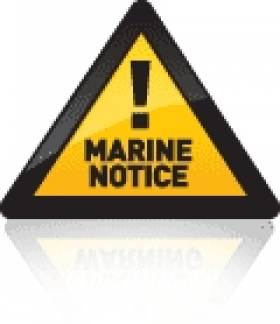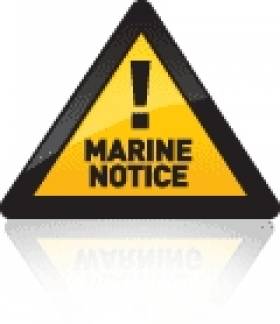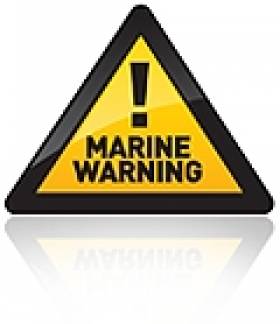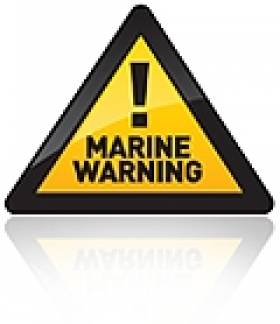Displaying items by tag: 3D seismic survey
Marine Notice: 3D Seismic Survey In Porcupine Basin, September 2014
#MarineNotice - The latest Marine Notice from the Department of Transport, Tourism and Sport (DDTTAS) advises that Polarcus DMCC is scheduled to carry out a 3D seismic survey in the Porcupine Basin, southwest coast of Ireland, in early September.
The survey will cover 633 sq km and is is expected to last for around 20 days, subject to weather.
The seismic vessel M/V Polarcus Amani (Call sign C6ZD3) is scheduled to carry out the work. The vessel will be towing 10 cables, each 8.1km long with 150m separation at depth of 14 metres, with a total array width of 1.35km.
A buoy equipped with a radar reflector and navigation strobe light will be deployed at the end of each cable.
The seismic vessel will be accompanied by support vessel M/V Bravo Sapphire (Call sign ZDJY8) and chase vessel M/V Nomad (Call sign EI5298). All work vessels will be listening on VHF Channels 16 and 67.
The seismic vessel in particular will be restricted in its ability to manoeuvre while carrying out the survey so all vessels, particularly those engaged in fishing, are requested to give the M/V Polarcus Amani, her towed equipment, the M/V Bravo Sapphire and the M/V Nomad a wide berth and keep a sharp lookout in the relevant areas.
Co-ordinates for the proposed seismic 3D survey are included in Marine Notice No 52 of 2014, a PDF of which is available to read or download HERE.
Marine Notice: 3D Seismic Survey In Northern Porcupine Basin
#MarineNotice - Dolphin Geophysical AS, on behalf of Capricorn Ireland Limited, is scheduled to carry out a 3D seismic survey in the Northern Porcupine Basin next month.
The survey will cover 1,974.5 sq km off the west coast and is anticipated to commence at the beginning of next month for 45 to 60 days, subject to weather.
The seismic vessel M/V Sanco Sword (Call sign ZDNE7) is scheduled to carry out the work. This vessel will tow 12 cables, each 8km long with 100m separation at a depth of 16-24m below the surface, for a total width array of 1.1km.
The seismic vessel will be accompanied by support vessel M/V Sunrise-G (Call sign 3FKF6) and guard vessel M/V Ary (Call sign YJQJ5).
The seismic vessel will be restricted in its ability to manoeuvre while carrying out the survey, and all vessels are requested to give these 3D survey operations a wide berth. The work vessels will be listening on VHF Channel 16 throughout the project.
All other vessels, particularly those engaged in fishing, are requested to give the M/V Sanco Sword, the M/V Sunrise-G and M/V Ary and their towed equipment a wide berth and keep a sharp lookout in the relevant areas.
Full details of co-ordinates for this survey operation are included in Marine Notice No 44 of 2014, a PDF of which is available to read or download HERE.
Marine Notice: 3D Seismic Survey in Porcupine Basin
#MarineNotice - The latest Marine Notice from the Department of Transport, Tourism and Sport (DTTAS) advises of a 3D seismic survey in the Porcupine Basin off the Kerry coast to begin in early July for a period of seven weeks, weather permitting.
Polarcus, on behalf of Kosmos Energy Ireland, is scheduled to carry out the work over an area of more than 5,700 square kilometres in a region previously identified as having potential for enormous oil reserves.
Carrying out the survey will be the seismic vessel M/V Polarcus Amani (Call sign: C6ZD3). The vessel will be towing 10 cables, each 7.2km long and 150m apart, at a depth of 10m. The total width of the array is 1.35km. A buoy with a radar reflector and navigation strobe light will be deployed at the end of each cable.
The seismic vessel will also be accompanies by the support vessel M/V Bravo Sapphire (Call sign: ZDJY8) and chase vessel M/V Calvin (Call sign: 3EGU4). All three will be listening on VHF Channel 16 throughout the project.
The work vessels will also be restricted in their ability to manoeuvre while carrying out the survey, and all other vessel are requested to give these operations a wide berth and keep a sharp lookout in the relevant areas.
Full details of co-ordinates and a map of the work area are included in Marine Notice No 28 of 2013, a PDF of which is available to read or download HERE.
Marine Notice: 3D Seismic Survey in Celtic Sea Update
#MarineNotice - CGG, on behalf of Fastnet Oil & Gas, is scheduled to carry out a full 3D seismic survey at Mizzen Basin in the Celtic Sea off the south-west coast beginning this month.
Details of this survey - as part of Fastnet's option on the Deep Kinsale Prospect - were previously reported on Afloat.ie but some details have been amended since.
The survey is expected to run for 35 days, subject to weather.
For full details - including co-ordinates of the work areas - see Marine Notice No 22 of 2013, a PDF of which is available to read or download HERE.



























































